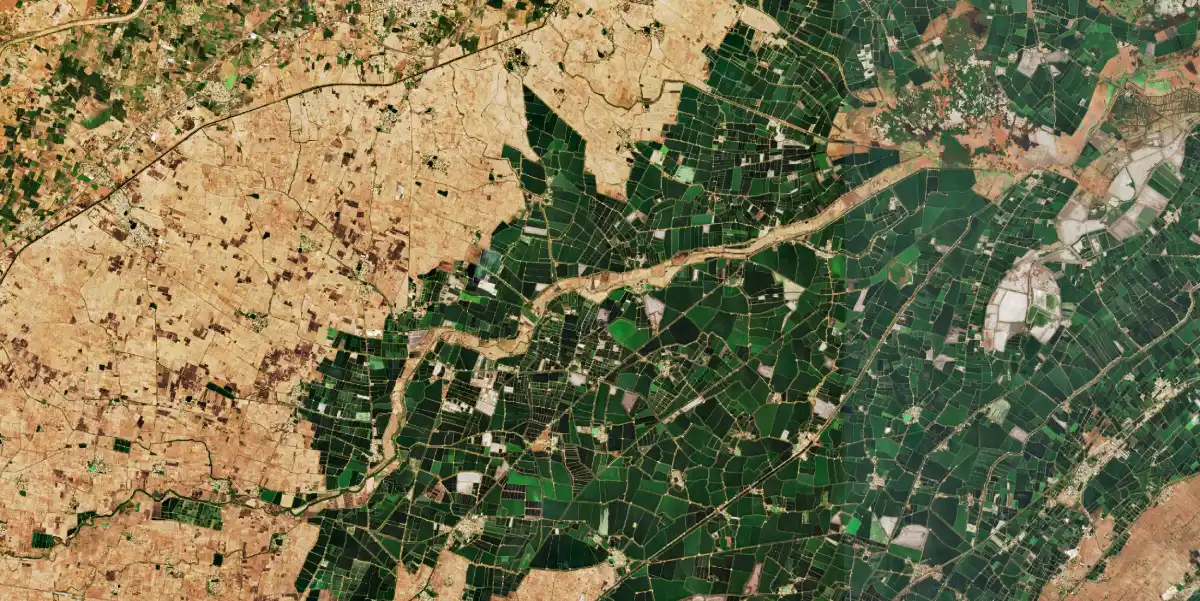Budameru Canal: A Lifeline Under Threat – History, Challenges, and Future Prospects
The Budameru Canal has been a cornerstone of life in Andhra Pradesh, India, serving as a critical source of irrigation, urban water supply, and flood management for decades. This 40-kilometer waterway, running through the Krishna district, is essential for the region’s agriculture and urban infrastructure. However, like many of India’s water bodies, it now faces a series of challenges that threaten its sustainability. In this article, we explore the history, current state, challenges, and future prospects of the Budameru Canal.
History of the Budameru Canal
Origin and Construction
The origins of the Budameru Canal date back to the British colonial era, when it was constructed to boost the agricultural productivity of the Krishna district. Designed to divert water from the Budameru River, a tributary of the Krishna River, the canal was initially built to irrigate the fertile plains of the region. Over time, the canal network expanded, becoming a vital infrastructure component that supported the livelihoods of thousands of farmers.
Early Usage and Significance
In its early years, the Budameru Canal was instrumental in transforming the Krishna district into a major agricultural hub. The canal’s waters irrigated vast tracts of land, enabling the cultivation of rice, sugarcane, and various vegetables, which significantly bolstered the local economy. Additionally, the canal played a crucial role in flood control and drainage, safeguarding agricultural lands and nearby settlements from the devastating impacts of excess rainwater.
Current State of the Budameru Canal
Irrigation and Agriculture
Today, the Budameru Canal continues to serve as a primary irrigation source for thousands of farmers in the Krishna district. It supports the cultivation of crops like paddy, sugarcane, and other staples. However, its efficiency has been compromised by siltation and reduced water flow due to pollution and encroachments.
Urban Water Supply and Drainage
Beyond agriculture, the canal also plays a significant role in urban water supply and drainage. During dry seasons, its waters are sometimes used to supplement the water supply for communities in and around Vijayawada. Moreover, the canal acts as a drainage channel during the monsoon season, helping manage excess rainwater and prevent flooding.
Challenges Facing the Budameru Canal
Pollution and Environmental Degradation
One of the most pressing challenges facing the Budameru Canal is pollution. Industrial effluents, untreated sewage, and solid waste have severely degraded the water quality, posing health risks to local communities and affecting agricultural productivity. This pollution has led to a buildup of harmful bacteria and toxins, making the canal a dumping ground for waste.
Encroachments and Urban Development
Encroachments along the canal’s banks have further exacerbated its problems. Unregulated urban development and illegal constructions have narrowed the canal’s width, obstructing its flow and reducing its water-carrying capacity. This has also made it challenging for authorities to conduct maintenance and desilting operations effectively.
Siltation and Maintenance Issues
Siltation is another significant challenge. Over time, sediment buildup has reduced the canal’s depth, impairing its ability to carry sufficient water for irrigation and drainage. Inadequate maintenance and irregular desilting efforts have worsened these problems, reducing water availability for agriculture and increasing flood risks during heavy rains.
Government Initiatives and Restoration Efforts
Cleaning and Desilting Operations
Recognizing the canal’s importance and the challenges it faces, the Andhra Pradesh government and local authorities have launched various initiatives to clean and restore the Budameru Canal. Regular desilting operations aim to remove accumulated sediment and restore the canal’s flow capacity, improving water availability for irrigation and reducing flood risks.
Pollution Control Measures
To combat pollution, several measures have been implemented, including constructing sewage treatment plants and regulating industrial discharges. Awareness campaigns have also been launched to educate the public about the importance of keeping the canal clean and the dangers of dumping waste.
Regulations and Legal Framework
The government has also strengthened the legal framework to protect the Budameru Canal. Strict regulations have been put in place to prevent encroachments and penalize those who pollute the canal. However, enforcing these regulations remains a challenge, with many violations still going unpunished.
Future Prospects for the Budameru Canal
Sustainable Development Plans
Looking ahead, sustainable development plans are being considered to ensure the long-term health of the Budameru Canal. These plans include modernizing irrigation infrastructure, enhancing flood management systems, and promoting sustainable agricultural practices that minimize water use and reduce pollution.
Community Involvement and Awareness
Community involvement is crucial for the canal’s future. Local residents, farmers, and businesses need to actively engage in conservation efforts, such as participating in clean-up drives, adopting sustainable practices, and complying with environmental regulations. Raising public awareness about the canal’s importance and the threats it faces is key to fostering a sense of ownership and responsibility.
Conclusion
The Budameru Canal has been a lifeline for Andhra Pradesh, supporting agriculture, urban water supply, and flood management for decades. However, it now faces numerous challenges that threaten its sustainability and effectiveness. While government initiatives and community efforts are underway to restore and protect the canal, much more needs to be done. A collective effort involving all stakeholders is essential to preserve this crucial waterway for future generations.
Tags: Andhra Pradesh, Budameru Canal, environmental conservation, irrigation, pollution, sustainable development, water management

